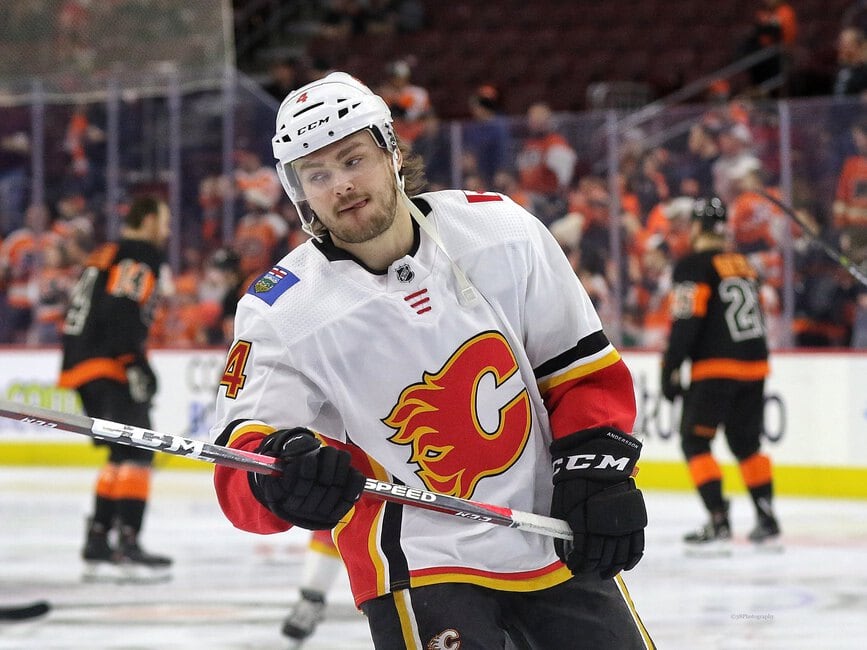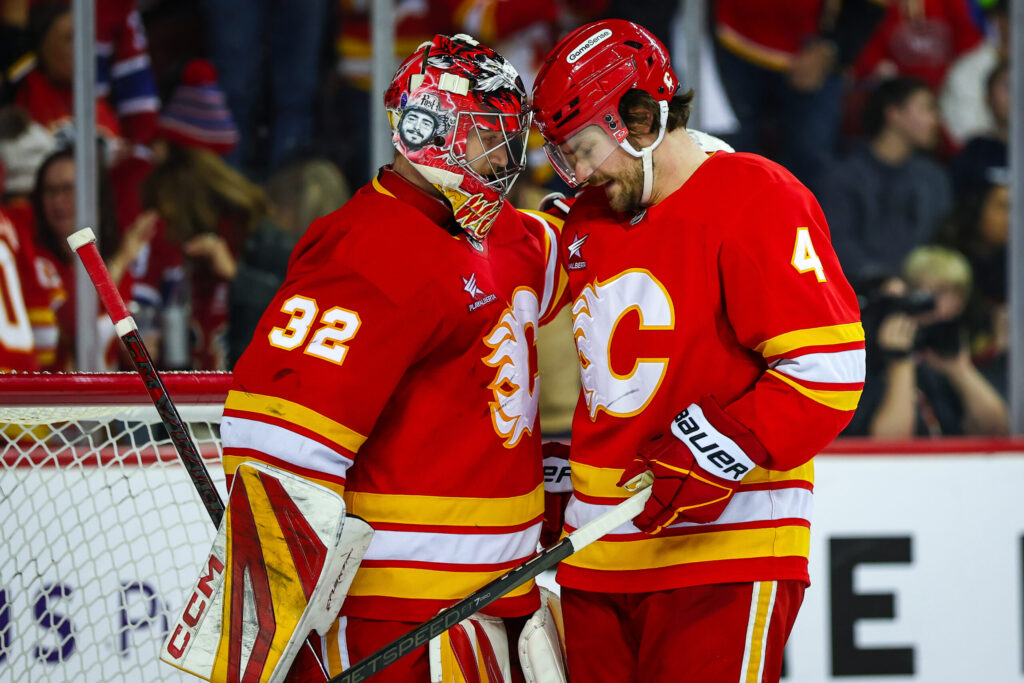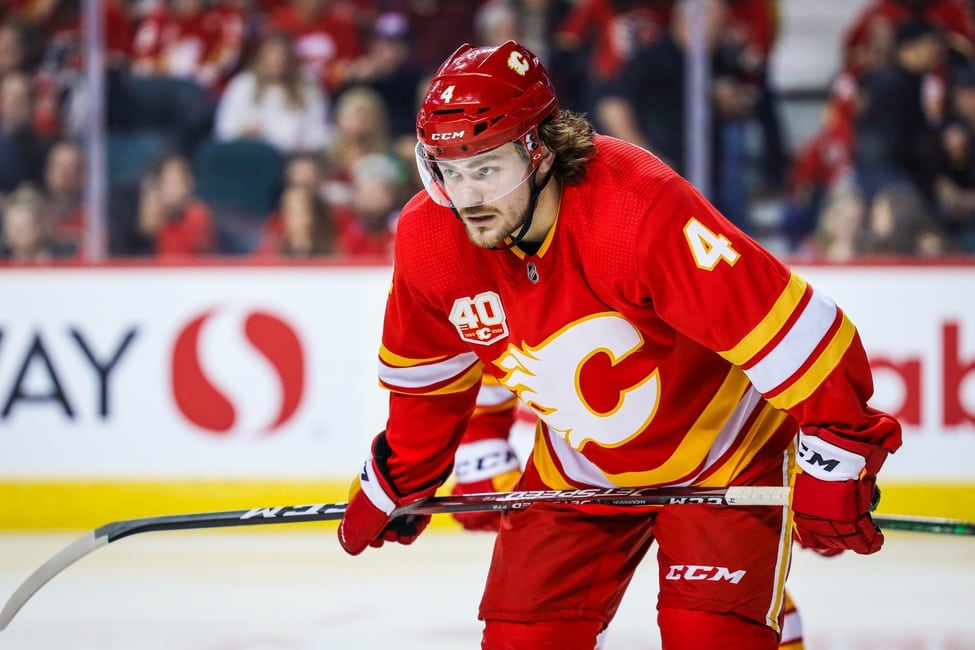In the modern NHL, some truths are spoken quietly in backrooms, while others are declared openly by the team captain. For Rasmus Andersson and the Calgary Flames, it’s the latter. When Mikael Backlund states that a trade involving his top defenceman is “inevitably happening” and “obvious,” it’s no longer a rumour; it’s a statement of intent. The player himself isn’t feigning ignorance. “I don’t know what’s gonna happen. Honestly,” Andersson admitted in April. “I just don’t.”
The era of the Flames team that dominated the Pacific Division in 2021-22 is officially over. Most of the core has departed, and Andersson, the 28-year-old right-shot blueliner, stands as one of the last significant, movable pieces from that roster. For General Manager Craig Conroy, this isn’t a matter of if he will trade his top-pairing defenceman, but a complex calculation of when, where, and for what return. It’s a high-stakes game of asset management, player empowerment, and market timing that is set to define the next phase of the Flames’ rebuild.
The Writing on the Wall
The reasons behind the impending divorce are straightforward. Andersson is entering the final season of his six-year, $27.3 million deal ($4.55 million AAV) and is eligible for a massive extension, one the Flames have shown no interest in discussing. Backlund noted that Andersson “wants a big contract,” and after three consecutive seasons of missing the playoffs, Calgary is not in the business of handing out lucrative, long-term deals to players approaching their 30s.

While Andersson can still log heavy minutes, his performance last season was a cause for concern. He finished with a respectable 11 goals and 31 points, but also posted the NHL’s third-worst plus/minus rating at a staggering minus-38. For a team looking to build from the ground up, retaining an expensive, pending UFA whose defensive metrics are cratering is simply not prudent asset management. The trade is a necessity for a franchise pivoting fully towards the future.
The Player Holds the Power
While the Flames hold the contract, Andersson holds the cards. His deal includes a six-team no-trade clause, and by all accounts, his list of preferred destinations is “very short.” This leverage has already been flexed. It’s been reported that Andersson has already declined at least one trade proposal this offseason, a deal that would have sent him to the Ottawa Senators, because he “didn’t feel like that was a good fit for him and his family.”
This veto power creates a significant challenge for Conroy. It limits the pool of potential bidders and can suppress the return offers, as interested GMs know they aren’t competing against the entire league. The Flames have reportedly received “underwhelming offers” thus far, a direct consequence of Andersson’s ability to dictate the market. This isn’t a situation where the highest bidder wins; it’s one where the highest bidder on an exclusive, player-approved list wins.
Conroy’s Calculated Patience
Despite the pressure, Conroy is “playing this exactly right.” He understands that he holds a “premium asset”—a minute-munching, right-handed defenceman who can run a power play. These players are a rare and coveted commodity in the NHL, and Conroy is under no “heavy pressure” to accept a mediocre deal before the season begins.

His strategy is clear: wait for desperation to set in around the league. A team that feels it’s a top-four defenceman away from Stanley Cup contention in February will be far more willing to meet Calgary’s price than they are in August. That price is reportedly a “first-round pick and a blue-chip prospect.” Conroy is content to let Andersson start the season in Calgary, play top-pairing minutes, and, motivated by his impending free agency, hopefully rebuild his value. It’s a calculated risk, but one that could pay off handsomely if the market develops as he expects heading into the March trade deadline.
Mapping the Potential Landing Spots
The list of suitors is intriguing, a mix of contenders looking for a final piece and teams aiming to make a significant leap.
- Vegas Golden Knights: Considered by many to be the “most likely destination.” Following the unfortunate news surrounding Alex Pietrangelo’s potential retirement, the Golden Knights have a massive hole on their blue line. Andersson is a logical fit: a right-shot D-man who can play in all situations. The asking price is steep, and cap gymnastics would be required, but a motivated Vegas front office is one of the most creative in the league.
- Carolina Hurricanes: After letting Brent Burns go to free agency, the Canes have the cap space (over $10 million) and the organizational need for a top-four puck-mover. Reports suggest talks have already been “quite advanced,” and Carolina certainly possesses the “abundance of draft picks and prospects” to get a deal done.
- Los Angeles Kings: The Kings have been repeatedly linked to Andersson. With Drew Doughty’s injury history, adding another top-tier righty makes sense. They have a clear opening on their second pair, and Anze Kopitar’s large contract coming off the books next summer would create the financial runway for a long-term extension.
- New Jersey Devils: Looking to “shake things up,” the Devils are an interesting dark horse. While a speculative Dougie Hamilton reunion in Calgary seems unlikely, a package centered around a young forward like Dawson Mercer could be the kind of “futures” based deal that entices the Flames.
- Toronto Maple Leafs: The Brad Treliving connection cannot be ignored. The former Flames GM signed Andersson to his current contract and knows his game inside and out. With Morgan Rielly’s future in question, a creative swap isn’t out of the realm of possibility.
The High-Stakes Waiting Game
So why hasn’t a deal been made? The primary obstacle is the “total cost of acquisition.” An acquiring team isn’t just trading a first-round pick and a top prospect; they are also committing to a “massive new extension” for Andersson, likely in the range of seven or eight years. That’s a huge commitment in both assets and future cap space.
For the Flames, letting this drag on is a double-edged sword. A strong start from Andersson could inflate his value, leading to the premium return Conroy covets. However, the risks are substantial. An injury or another down year could tank his value entirely. Furthermore, the longer Calgary waits, the more leverage Andersson’s camp gains to force a trade to a specific team, potentially for a “mediocre return”—a scenario eerily similar to the Noah Hanifin saga last season. The constant speculation could also become a “huge distraction” for a young team trying to forge a new identity.
Also on the EDGE – Calgary Flames’ Calculated Bet on the Familiar for 2025-26
The initial hope of a pre-training camp trade is fading. All signs now point to a resolution closer to the 2026 NHL Trade Deadline. Until then, Rasmus Andersson will wear the Flaming C, playing out the final act of a relationship that everyone involved knows has already reached its conclusion. It is no longer a partnership, but a transaction in waiting.
Created with the aid of Gemini AI
